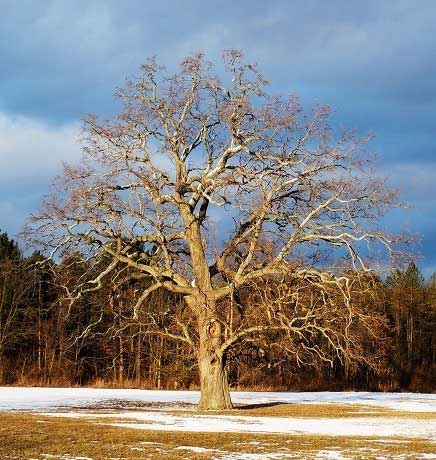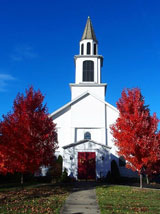Pastors Message – January/February, 2018

Dear Friends,
At the Christmas Eve service, during the time for announcements, Pat Fitzgerald asked the congregation to consider donating to the fund for repaving the parking lot. Reminding us of the long history of the church and its significance as the oldest continually operating church in Chemung County, Pat personified this lovely old church, referring to it as she, a grand old woman in need of a little care. I was reminded of the book, The Giving Tree, by Shel Silverstein, the story of a tree and of a boy. In it the tree has also been personified and the book is simply conversations between the tree and boy, conversations which have spanned decades. This time upon reading this tale I found parallels between the church, and the tree, and the boy and us.
As the story begins, the tree gives the little boy her apples to pick and her branches to climb. The boy and the tree love each other and are happy in their life together. As the boy grows older, however, his interest in the tree becomes less. The tree is very lonely until one day the boy returns as a young man. The tree offers her apples and branches, but the boy claims that he is too old to climb and play. He is more interested in money. ‘Can’t you give me some money?’ he asks the tree. The tree has no money, but she does have apples. The tree asks, why doesn’t the boy pick the apples and sell them, then he will be happy. The boy does this and the tree is happy. But then the boy stays away an even longer time and the tree is sad.
Years later the boy returns. The tree is overwhelmed with joy as she invites the boy to swing from her branches. But the boy is too busy to play. What he really wants is his own family and a house to keep him warm. Can the tree give him a house? No, but the boy can cut her branches and build a house with them, suggests the tree; then he will be happy. The boy does this and the tree is happy.
Many years pass before the boy, now middle-aged returns. The tree, overjoyed, invites the boy to play. But now the boy is too old to play. All he wants is a boat which will take him far away. ‘Can you give me a boat?’ The tree invites the boy to cut down her trunk and make a boat so he can be happy. The boy does this, and the tree is happy–but not really, for now only a bare stump remains.
When, years later, the boy returns, he is hunched-over, an old man. The tree apologizes for having nothing to offer any longer, no more apples to eat or branches to climb, only an old stump. But the old man says his teeth are too weak for apples, and he is too old to climb. All he needs is “a quiet place to sit and rest” for he is very tired. “Well, said the tree, straightening herself up as much as she could, ‘an old stump is good for sitting and resting. Come, boy sit down, sit down and rest.’ “And the boy did. And the tree was happy.”
It is a poignant story. The tree was truly a giving tree. It gave and gave and even when it only had a stump left, it still gave a place of rest and quiet.
Perhaps you may find parallels with your own stories and life experience, maybe even with yours or a family member’s relationship with this church.
We come to the church and ask her to bless our children in baptism, to witness to our marriages, to give comfort when overwhelmed with life’s challenges, and to provide solace and assurance at the end of life’s journey. We come seeking the assurance and blessing of a loving God. And maybe we can see the tree as the one upon which Jesus gave us the greatest gift of all.
Regardless of how we may interpret this story, we do trust and expect the church, this church, to be here for us. But the reality is that that is not necessarily going to be the case. This church, as is true with most churches, gives and gives, and keeps the lights on for us, but the reality is that support is dwindling, as is membership. And each year more and more churches close their doors and become simply a memory.
Here, at First Presbyterian Church, we do have hope. The Mission Study has been completed and accepted by the Presbytery. The Pastor Nominating Committee has been elected, and are moving forward, but we need you to give your blessing, your energy, your support and your participation to ensure the success of the churches endeavors.
As Epiphany leads us to Lent and on into the celebration of Easter, let us consider what this church means to us and what it needs from us for its light to continue to burn brightly on into the future.
Peace and blessings,
Pastor Beth




